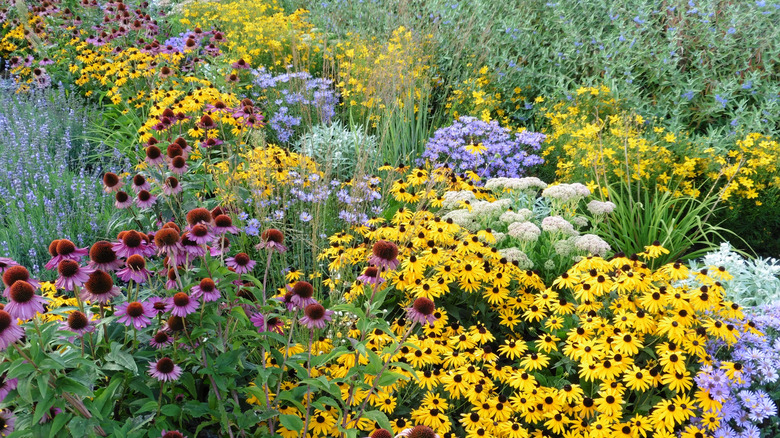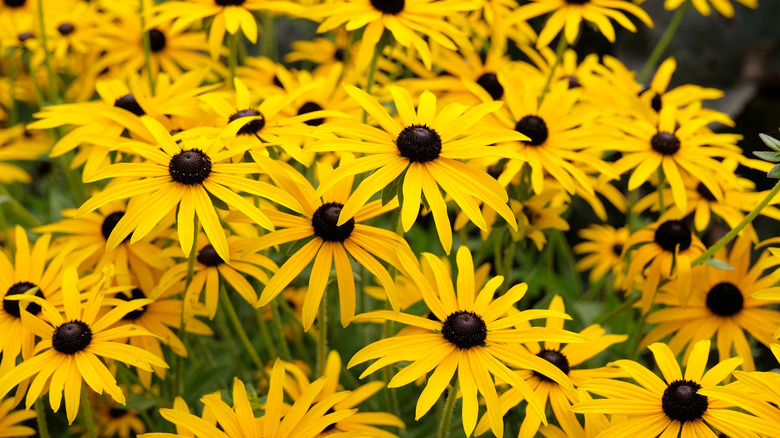The Iconic Garden Flower That Happily Comes Back Every Year
There are few things more satisfying than a flower garden that comes back year after year with little work on your part. As fun as annuals can be, replanting every year is a lot of work. Opting instead for perennials and reseeding plants for some or all of your beds ensures gorgeous blooms even when things get busy and you don't have time to work on your garden. One of the best flowers for ensuring a cheerful and vibrant garden every summer is the classic black-eyed Susan (Rudbeckia hirta).
With their vibrant yellow petals and striking black centers, black-eyed Susans are ideal for ensuring colorful gardens even during the hottest and driest parts of the summer. And as the flowers are native to eastern North America, they're perfect for attracting native butterflies and birds to your garden as well. While some black-eyed Susan varieties are annuals and others are perennials, the species' willingness to reseed ensures that the plants will be back every year.
Caring for black-eyed Susans in the garden
Black-eyed Susans thrive in USDA hardiness zones 3 through 8 and prefer sun to part sun locations. They grow best in well-draining soil, but are not overly picky. Make sure to avoid overfertilizing them. Black-eyed Susans generally bloom from mid-summer through mid-fall. While you can deadhead them to ensure they keep blooming for as long as possible, you may want to allow a few flowers to go to seed to ensure even more blooms for the next year. Conveniently, black-eyed Susans aren't the type of flower that deer like to eat, so you're unlikely to have your beautiful garden nibbled away by pesky visitors.
With a height of around 2 to 4 feet, black-eyed Susans are ideal for the middle of garden beds. They pair well with other drought-tolerant flowers native to North America. Coneflowers and black-eyed Susans are a classic pairing and thrive in similar conditions. Other good companions include blanket flowers and coreopsis. You can even pair them with other plants in the Rudbeckia genus, like their slightly taller relative, the brown-eyed Susan (Rudbeckia triloba). One plant that surprisingly isn't related? The black-eyed Susan vine, which has similar-looking flowers but is actually native to tropical parts of Africa and only hardy in USDA zones 9 and 10.

